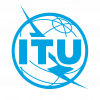BLOG
Telecom26 blog
IoT eSIMs, iSIMs and the need for global connectivity

Our observations are backed up by The Thales Group who wrote in this blog Unleashing the Power of eSIMs that:
“The IoT industry is in constant evolution. With millions of new connections made every day, we are still progressing to a smarter world. However, maintaining strong and reliable connectivity will be critical if we are to reap the benefits of IoT. With the help of eSIM technology, the activation and management of IoT devices can be simplified across the business landscape.”
“And Enterprise OEMs are finding it a challenge to interface with multiple Connectivity Service Providers (CSPs), which require time consuming and costly roaming agreements, to properly connect their devices across multiple countries. The key business need is for a simple and secure way to connect their devices, and to benefit from a single SKU (Stock Keeping Unit) approach that avoids unnecessary supply chain costs.”
Meanwhile this article by Speedcast based on a report by Cisco explains “Why IoT projects fail and what you can do to prevent it” and says:
“Today, a staggering 76 percent of IoT projects either stall at the proof-of-concept stage or fail to achieve their objectives” because of various reasons “including lack of collaboration between IT and the business side, lack of IoT expertise and a go-it-alone strategy that fails to build partnerships with other companies making up the complex ecosystem of IoT”.
Global Connectivity, IoT, IoT eSIM
So as discussed above, reliable connectivity is key to the success of most IoT projects. And yet far too often IoT device manufacturers leave the connectivity component – including the selection of IoT eSIM and IoT physical SIM - to the end-user or agency that deploys their device - and may well end up blaming the device rather than poor connectivity for project failure.
However, when a manufacturer decides to take greater control over the connectivity of its IoT devices, it faces another challenge - it may not know where its device will end up and, even if it knows the country and can partner with a particular MNO the device’s connectivity is still at the mercy of one operator with unreliable bandwidth and patchy connectivity very real possibilities.
And again this will leave the owner of the IoT device with the problem of juggling multiple SIMs – IoT SIMs and physical SIMs – across devices to find the strongest local network.
IoT eSIMs and iSIMs
Moving on a little from IoT eSIMs we have also discussed the emergence of integrated SIMs (iSIMs) which, according to IoT magazine, “moves the SIM from a separate chip into a dedicated silicon area which sits alongside the application processor and/or cellular radio”.
In a nutshell, IoT eSIMs spell the end of the physical chip whilst iSIMs remove the need for any chip at all. Our team of IoT experts believe that iSIMs will be embraced by IoT device manufacturers as small sensors need to conserve space and reduce power consumption.
However, whatever type of SIM card is used in an IoT device - traditional physical IoT SIM cards, IoT eSIM, iSIM - IoT device manufacturers should be inserting themselves into the connectivity problem at the point of production.
Telecom26’s Global IoT eSIM cards
At the heart of Telecom26’s IoT service are our global IoT eSIMs and physical SIM cards. Just one of our global IoT eSIMs and physical SIM cards in an IoT device:
- Provides access to all of the networks covered by our global roaming service. That’s 1100+ cellular networks belonging to 650+ mobile operators in 200+ countries.
- Removes the need to worry about the coverage of a single MNO, or the existence of roaming alliances. Our SIMs automatically select the best performing network in the area, cross-border, while providing enterprises with the freedom to change SIM profiles and services with ease.
- Can be customised with routing profiles built for each IoT device according to a customer’s needs and budget. For example, for organisations that are more price sensitive we can ensure that our Global SIM cards automatically connect to the cheapest service in the area.
In addition, Telecom26’s global IoT eSIMs and physical SIM cards:
- Are programmable over the air - Over the Air (OTA) updates enable remote control of SIM profiles and it’s easy to add new profiles and adjust services on the fly.
- Have secure, independent architecture based on Standards-based, 3GPP-compliant infrastructure, with Tier-1, carrier-grade performance
- Use API access with a full management portal for business process integration and a comprehensive interface, for full control of IoT devices.
We support all current SIM form factors, including 2FF, 3FF and 4FF – that’s mini, micro and nano, as well as MFF2. In addition to classic SIMs, we also offer Global IoT eSIM, which provides new levels of flexibility.
We take care of the full end-to-end lifecycle, from programming to reprogramming and all necessary updates.
In a nutshell, Telecom26 enables data connectivity, anywhere - so that your IoT SIM device can connect to the best available network, regardless of location.
You can read more about our IoT SIM service here.
And, if you’d like to find out how Telecom26 can help your organisation to embrace the benefits of IoT SIMs, IoT eSIM, IoT Networks, improve IoT connectivity and maximise IoT Security please contact us.
If you’d like to discuss about IoT and Private Networks at Sea requirements please get in touch.



